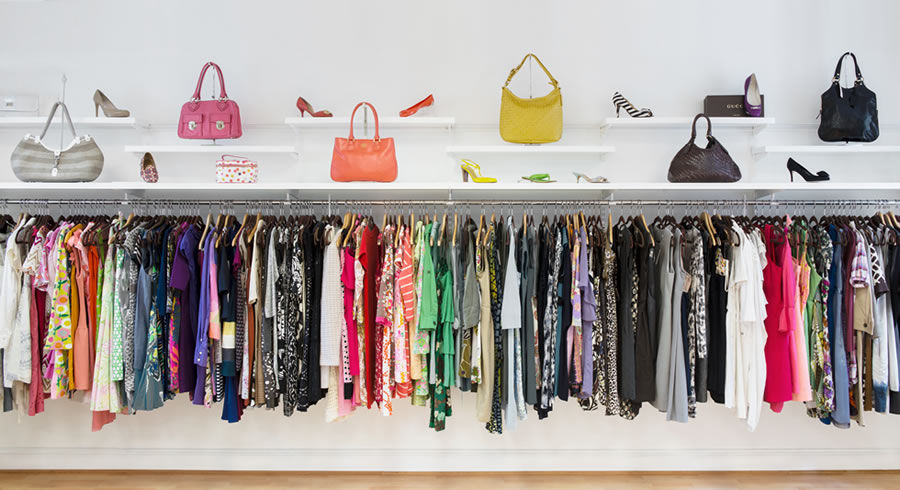Fast-Fashion and Throwaway Clothes
- Chelsea Biala
- Jun 11, 2018
- 4 min read

The other day, I was folding my laundry and a couple of items I’d bought at the mall. I tried hanging up several new shirts, only to find that my closet was already choked with heaps of clothing. Now, I’m no stranger to this issue; I’m often combing through clothes to make room for new ones. As always, I sorted my wardrobe into keep and discard, planning on donating the discard pile to Goodwill (or a similar charity) as usual. I was finished within minutes-- but what I noticed about the piles as I shoved them into bags concerned me.
All of the “keep” items remained almost perpetually the same, which comes as no surprise. I’m faithful to a few staple items in my wardrobe, and these items in particular I’ve owned for a very long time and wear often. However, all the clothes I planned on discarding I had worn once, twice, or not even at all, and here I was giving them away with barely any use. A tremendous waste of money for me, yes, but also a waste of energy, resources, and production capacity. As hard as I thought, I just couldn’t justify the purchase of these items, likely made on a whim without real consideration.
This epidemic is not unique to me. I hear similar stories from friend and peers, especially girls; we buy new, trendy pieces constantly, but always default to wearing the same trusty tee shirts and sweatpants. It isn’t shocking, especially in as affluent a community as ours (Hinsdale, IL) where families can afford to spend hundreds of dollars on unnecessary clothing. What’s worse, though, is many don’t consider donating or selling their old clothes, they just throw it all away.
The question is, why do we keep buying all the time when we know we won’t wear the clothes? The answer is simple: fast fashion. Each season brings new, trendy styles that one just has to own in order to stay in the loop. Capricious shopping habits combined with ever-changing popular fashion make for a huge industry of “throwaway pieces,” which are out of style as soon as they hit the sale racks. Stores like Forever 21, Hollister, and H&M boast constant bargains in order to attract customers. However low the cost may seem, though, it adds up over time.
In addition to financial harms, fast fashion is detrimental to the environment. Aforementioned neglect of the donation option leads to many articles of clothing ending up in a landfill, which is especially harmful when it’s composed of synthetic fibers. Most fast fashion retailers use almost all polyester, which takes a whopping 200 years to decompose. Dyes used in the production process can pollute rivers near factories; in fact, 20% of all water pollution comes from the apparel industry. CO2 emissions augment the air pollution problems, as well.
Over 150 billion units of clothing are produced per year, and on average, one wears an article of clothing 7 times before throwing it out. When considering the aforementioned environmental issues, one can see the huge carbon footprint the fashion industry leaves. And for what?
It’s hard to change the ways of the 1.2 trillion dollar fashion industry. However, I felt I had to do something besides merely encouraging my friends to donate their used clothing. This is why I started my Instagram account @cbsellsstuff-- to encourage sustainable fashion and make a little money.
The concept of the account is simple: I accumulate clothes, whether from my own closet, a thrift shop, or friends’ donations. I then sell them at a slightly marked-up price; just enough to earn some profit, yet far lower than the retail price of the item. I’m hoping that the lower prices will attract customers just like fast fashion retailers, except my clothes have no environmental impact; they’re already in circulation, barely worn or gently used. Every $100 of profit I make, I’ll donate half to a green charitable organization. This round it’s Dress for Success, a website that helps unemployed women get access to business professional attire for job interviews and the like.
While I’ve only posted three pieces so far, all have been sold, and I’m almost halfway to my first profit checkpoint. I’m working on a website on which to display older pieces that haven’t yet been sold and write a little bit about my mission, and hopefully to raise awareness about this pressing environmental issue. In the meantime, I continue to donate my old clothes and go thrift shopping whenever I can, encouraging my friends to do the same.
There’s a lot that can be done about the issue besides just donation. Check the tags of clothing and look for natural, organic fabrics: cotton, linen, wool. Shop thoughtfully. Think of shopping as an investment instead of a hobby. This will help you look for quality clothing, and even if it means spending a little more, the purchase will have more benefits in the long run.
Fashion sustainability is incredibly important to me. It combines a long-time love of clothes with my passion for the environment, and I plan on doing everything in my power to promote solutions to the problem under all of our noses. I can’t hope to alter the goals of fast fashion retailers everywhere, but for now, I do what I can to make a difference.





Comments